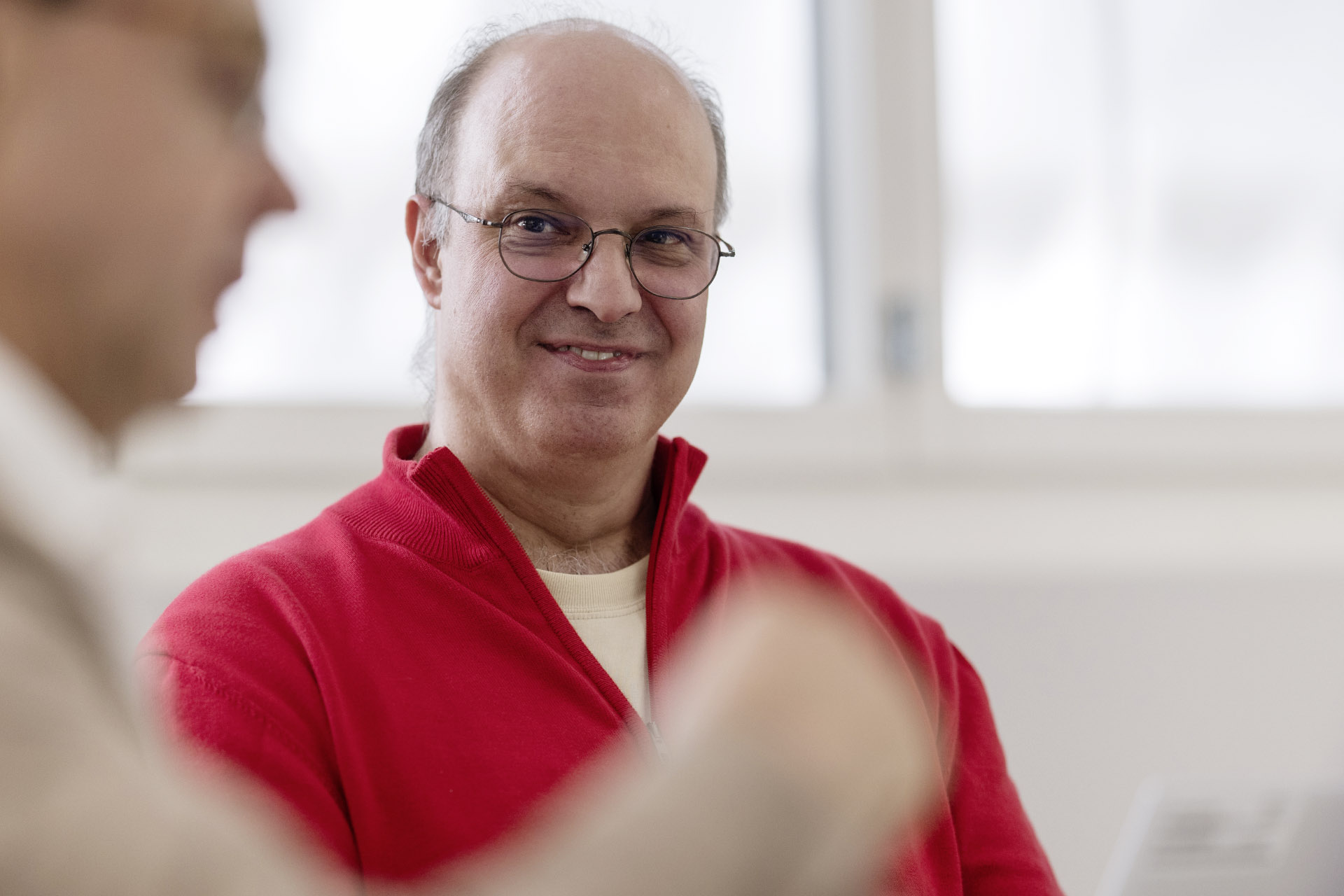Investigated
Antibiotic resistance The silent pandemic
The more we use antibiotics, the greater the likelihood that bacteria become resistant to them. And, as resistance grows, so does the number of patients at risk of inflammation developing into life-threatening infections. But despite the growing threat presented by multi-drug resistant organisms, ever more antibiotics are disappearing from the Swiss market. Why is that? And what can Swissmedic do as a regulatory authority?
This pandemic very rarely makes the news. It claims its victims stealthily, generally behind closed doors in hospitals. Sometimes the causes seem mundane – a knee that hurts more than it used to months after routine surgery or pneumonia that refuses to get better. One reason may be infection with bacteria that are immune to any antibiotic because they have mutated in such a way that they have cancelled out the mechanism of action of an entire class of antibiotics. The culprits are human. In recent decades, we have used antibiotics too widely and, in some cases, incorrectly. What’s more, resistant bacteria are transmissible, multiplying and spreading quickly in our globalised world. The phenomenon is reflective of the One Health principle, which recognises that the health of all living things and the environment are closely linked – and this extends to antibiotic use.
Unprofitable antibiotics
However, antibiotics are still essential medicines that are used to treat serious infections and blood poisoning, and preventively in chemotherapy, surgery and transplantation. “Antibiotics are immensely important”, emphasises Charlotte Geluk, who is responsible for assessing clinical data on the efficacy and safety of medicinal products at Swissmedic. Without them, she tells us, medicine would not be as advanced as it is today. A large number of treatments and operations would be completely impossible and the prospects for many accident patients would be much poorer. Just 20 years ago, multi-drug resistant organisms were barely an issue. Today, the WHO assumes that multi-drug resistant organisms kill millions of people around the world each year. And the trend is rising steeply.
The world is not standing by idly while this happens – a large number of programmes are underway to reduce antibiotic use. For example, Switzerland’s national Strategy on Antibiotic Resistance (StAR) is successfully promoting more appropriate use of antibiotics. Nowadays antibiotics are no longer the standard treatment for a large number of minor illnesses such as middle ear infection or tonsillitis and are also being used less in veterinary medicine. Nevertheless, infections with multi-drug resistant organisms are on the rise despite these efforts.
The situation is becoming more critical, yet virtually no new antibiotics are coming onto the market. Just a handful of pharmaceutical companies worldwide are developing antibiotics. Research-based companies in Switzerland have pulled out of the antibiotics market. Swissmedic is feeling this lack of interest too. Of the 12,000 authorisation applications received by the Agency in 2022, there were 47 first authorisations, in other words medicinal products that were new on the market. According to Claus Bolte, Chief Medical Officer at Swissmedic, this is a relatively high figure, even when compared to authorisations by the European Medicines Agency (EMA) or the American FDA. With one exception, though, no new antibiotics were authorised last year. “We’re happy if we get an application for an antibiotic or new antimicrobrial every two years”, Claus Bolte says. “But that’s really not enough.” Claus Bolte has been at Swissmedic for eleven years. Until mid-2023 he was responsible for the authorisation of medicinal products in Switzerland. He is following the growth in antibiotic resistance with great concern.


Incentives needed
The situation is unlikely to improve even after the occasional authorisation and launch of a new antibiotic, Claus Bolte says: “They are used very restrictively, in line with the clinical trials and then often only when other antibiotics have stopped working.” The new antibiotics are the ace up the sleeve of intensive care units, so to speak. They are kept in reserve for when it is a matter of life or death for patients who have been infected with multi-drug resistant organisms. As a result, sales are very low and it does not make financial sense for companies to bear the high cost of developing them to market readiness. “Most pharmaceutical companies have withdrawn from the antibiotics market for this reason”, says Claus Bolte. He regrets that the situation has become frustrating for researchers who have invested a lot of commitment and resources in basic research, supported by the Swiss National Science Foundation and other funding agencies: “They do outstanding work in Switzerland, but then they can’t find companies to invest in their discoveries.”
What about relocating development and production to Switzerland to supply healthcare needs? “That would be desirable”, Claus Bolte says, before adding that “Switzerland is one of the world’s most important centres of pharmaceutical activity, but we can’t force companies to develop, manufacture or submit here. The only way to do this in a free, well regulated market is with incentives.” That doesn’t mean that solutions are not being sought. There are several national and international networks, round table events such as the antibiotics round table and regulatory cooperations that discuss new approaches and work closely together. Within the Access Consortium, for example, Switzerland is working with its partner authorities in Australia, Canada, Singapore and the United Kingdom to find solutions. However, Claus Bolte is keen to emphasise that time is pressing: “We have to take antibiotic resistance every bit as seriously as cancer.”
More innovative approaches
Claus Bolte is therefore calling for better incentives for start-ups, spin-offs, SMEs and large companies to encourage them to start investing more in antibiotic development again. As he says, “resistance is global, but authorisation is national.” Some countries have already introduced innovative reimbursement systems and incentives, he tells us. One of these is the “Netflix model”, under which a country or region pays a manufacturer a fixed annual fee – like a subscription – regardless of how many antibiotics they buy or even if they buy any at all.
Claus Bolte also makes an urgent plea to industry because “antibiotic development has come to a standstill in the last century.” This, he says, stands in contrast to oncology, where several new active substances come onto the market every year. “We need more innovative approaches to treating infections too, say personalised precision medicine of the type that’s revolutionised the development of medicinal products for many types of cancer.” For example, it could be possible in the future to develop new active substances for specific properties of individual bacteria and continuously modify them, possibly with the aid of artificial intelligence.
“The impact of veterinary medicine”
Antibiotics dispensing in veterinary medicine is strictly controlled. Swissmedic vet Cedric Müntener explains how the situation in veterinary medicine differs from that in human medicine.
Cedric Müntener, how big is the problem of antibiotic resistance in animals?
It’s a highly topical issue, just like it is in human medicine.
A lot of people are avoiding chicken because they are worried about bacteria and antibiotic use. Is there anything to that?
We have very little to worry about. Switzerland’s strict food regulations prohibit potentially harmful residues from veterinary medicinal products in meat or other foods. Furthermore, the permitted limits have been calculated to ensure that any residues would not cause any harm even if you were to consume them every day for the whole of your life. Anyway, resistance is not transmitted by eating antibiotic residue in meat but by contact with resistant bacteria on the meat itself. Nevertheless, the use of antibiotics in countries such as Brazil, Canada or the USA to promote growth is a major problem.
Why is that?
Firstly, the substances make their way into the soil and water via the animals’ excrement and stay there for a protracted period. Secondly, they encourage resistance because the antibiotics are administered in very small doses over an extended period. Since the doses aren’t high enough to kill bacteria, they help create a perfect breeding ground for resistant organisms. The important thing, therefore, is if you must use antibiotics, use them for as short a time as possible and at a high enough dosage. That applies to animals and humans alike. Thirdly, resistant bacteria can transfer from animals to humans and spread quickly in our globalised world.
You’re responsible for the authorisation of veterinary medicinal products at Swissmedic. How strict are Swiss regulations?
In Switzerland and the EU, antibiotics can only be used to treat infections. Their use as growth promoters is banned. Furthermore, food safety is always paramount when it comes to livestock. Antibiotics dispensing is very strictly regulated and monitored. Anyone selling or using antibiotics has to report the fact using a national database operated by the Federal Food Safety and Veterinary Office (FSVO). It’s therefore reasonable to assume that veterinary medicine in Europe has only a small impact on the development of resistance.
What’s the situation as regards antibiotic authorisation? Is the number of applications falling in veterinary medicine too?
Yes. In fact, the situation is a lot more critical in some areas. Human medicinal products, including antibiotics, can be used in small animals with very few restrictions and without specific approval. In contrast, antibiotics for livestock are restricted to products that have been specially authorised. That means that a lot of antibiotics that are authorised for humans cannot be used in livestock. Furthermore, to ensure that antibiotics retain their effectiveness, the FSVO has published treatment recommendations for livestock and small animals. Unfortunately, though, ever more of the recommended “older” antibiotics are disappearing from the market and we are having to replace them with newer ones. However, using them can again create resistance issues. To avoid these, we are therefore trying to reduce or avoid antibiotic use, for example using vaccinations, strict hygiene rules and other health-promoting measures.